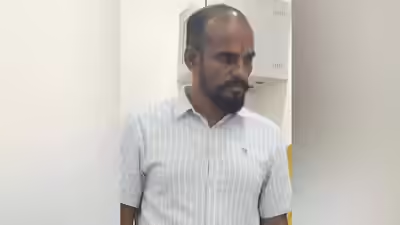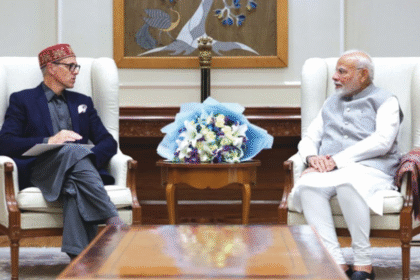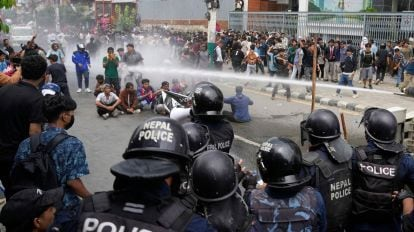The Fall of a Fugitive — Unraveling the Manhunt for Shiva Shetty
The monsoon rains had just begun to sweep across Mumbai when officers from the Crime Branch’s Unit 11 received the confirmation they had been anticipating for weeks: fugitive gangster Shiva Shetty was in the city. The information was not entirely unexpected. Intelligence had hinted at his return. Yet, the certainty in that moment, backed by boots on the ground and digital surveillance, marked the beginning of the end of a criminal shadow that had loomed over the city for over a decade.
Shetty, once a minor foot soldier in the vast labyrinth of Mumbai’s underworld, had evolved into a notorious figure in the post-D-Company era—a time when the big syndicates splintered, leaving room for ambitious operatives to rise. Known for his strategic brutality and links to smuggling networks stretching from Maharashtra to the coastal corridors of Mangaluru and Kochi, Shetty had eluded capture multiple times. This time, the police were ready.
A Calculated Move
According to senior officers involved in the operation, Shetty had returned to Mumbai under the radar, avoiding his usual hideouts. Surveillance teams tracked his associates, triangulated burner phone calls, and intercepted cash transfers through hawala channels. Once convinced of his presence in the western suburbs, the city’s elite anti-gang unit moved swiftly.
Late into the night of July 14, plainclothes officers cordoned off a stretch near Malad, an area previously regarded as neutral ground among warring gangs. Within minutes, Shetty was surrounded in a modest housing apartment registered under a false identity. There was no shootout, no last-minute escape—just a quiet surrender by a man who had spent years running.
The arrest was not just a tactical victory. It was symbolic. For a city perpetually wrestling with its criminal past, every high-profile capture acts as both deterrent and a reaffirmation of institutional control.
Who is Shiva Shetty?
Shiva Shetty, now in his early 40s, came up the ranks during the turbulent 2000s. Initially involved in real estate extortion rackets in Mira Road and Dahisar, his operational footprint expanded after the void left by aging crime bosses. Unlike old-school dons, Shetty preferred discretion over drama. He rarely appeared in public, used intermediaries for operations, and maintained relationships with politicians and law enforcement via proxies.
Investigators believe he was instrumental in multiple contract killings, arms smuggling from the Gujarat-Rajasthan corridor, and laundering money through construction shell companies. His syndicate’s reach was recently traced to Dubai-based handlers—once again highlighting the transnational nature of organized crime in India.
The System Strikes Back
The arrest of Shiva Shetty reflects a new kind of policing emerging in India’s metro cities—one that combines traditional informant networks with digital forensics, financial tracking, and inter-agency collaboration. Mumbai Police Commissioner Hemant Mishra, speaking to the press after the arrest, emphasized the importance of persistent groundwork.
“Shetty was clever, no doubt. But no one can stay ahead of the system forever,” Mishra said. “This arrest is a message to those who think they can operate in shadows.”
Legal experts say Shetty may face charges under the Maharashtra Control of Organised Crime Act (MCOCA), in addition to pending warrants related to extortion, attempted murder, and money laundering. His custody is expected to unearth further leads, possibly implicating financiers and facilitators across sectors
By the time Shiva Shetty was arrested, the man was more than just a fugitive — he was the quiet architect of a modern criminal ecosystem thriving in Mumbai’s lesser-watched corridors. Unlike flamboyant dons of yesteryears who thrived on headlines and high-speed car chases, Shetty operated in calculated silence, embedding his network into the overlooked alleys of urban life: unregulated redevelopment projects, second-hand mobile phone markets, logistic warehouses, and hawala exchanges that blended in with everyday commerce.
A Shift from Turf Wars to Territory Control
Post-2010, the underworld in Mumbai underwent a silent restructuring. With most of the traditional crime families decimated or exiled, the city’s criminal economy transitioned into decentralized, hyper-localized syndicates. Shiva Shetty saw an opportunity in this disorder. While older gangs fought over symbolic strongholds in South Mumbai, Shetty focused on the urban sprawl — the developing zones of Kandivali, Dahisar, Malvani, and Mira-Bhayandar.
His strategy was simple: no open confrontation, no flashy killings, just influence by infiltration. Builders found themselves forced to pay “security fees” in the form of labor contracts. Local corporators unknowingly green-lit redevelopment plans tied to Shetty’s laundering fronts. Extortion didn’t always come with a threat — sometimes it came with an offer too good to refuse.
The Role of Real Estate in the Criminal Model
According to investigators, Shetty’s operations had a particular affinity with the booming real estate sector. “He had a network of over 30 shell companies registered under aliases, pumping black money into slum redevelopment and infrastructure tenders,” says an Enforcement Directorate (ED) official currently tracing Shetty’s financial trail.
His men would offer logistical services, construction materials, or security manpower to legitimate builders. In return, he received guaranteed cuts from project profits, usually in untraceable cash. His reach extended beyond extortion — he brokered land deals between rival groups, quietly enforcing peace through intimidation and cash distribution.
Digital Evolution of Crime
What sets Shetty apart from old-school gangsters is how quickly he adapted to modern technology. He abandoned direct communication as early as 2015. Instead, encrypted messaging apps, cloud-based coordination, and anonymous SIMs formed the spine of his command structure. His operations were backed by a digital ledger — not of bank balances, but of debts, loyalty, and favors.
He employed cyber-savvy operators from engineering backgrounds to track police movements, monitor social media chatter for threats, and encrypt sensitive documents. From cryptocurrencies to e-wallet laundering, Shetty’s syndicate was several steps ahead of traditional law enforcement until a multi-agency tech unit finally cracked parts of his backend infrastructure earlier this year.
Political Nexus and Silent Protections
A Crime Branch source, requesting anonymity, hinted at the “unspoken political protection” that enabled Shetty’s prolonged freedom. “He had friends everywhere. No one protected him openly, but many turned a blind eye,” the officer said.
In return, Shetty offered electoral support. Local strongmen aligned with him could deliver booths during municipal and assembly polls. Funds flowed discreetly to regional parties through fictitious donors. These relationships offered Shetty not just immunity, but also access to crucial insider information — particularly during raids, tenders, and police reshuffles.
The Psychological Profile of a Modern Don
Unlike hardened criminals who thrive on personal involvement, Shetty was known for his detached command style. He rarely attended meetings in person. Instead, lieutenants acted as buffers, often unaware of who else was part of the core inner circle.
Psychologists analyzing taped conversations and behavioral patterns describe Shetty as “coldly rational, deeply analytical, and deeply loyal to no one except the system he built.” He had no long-standing alliances — only convenient collaborations.
Shiva Shetty’s arrest wasn’t the result of a single tip-off or a high-stakes chase — it was the culmination of years of painstaking surveillance, inter-agency cooperation, and, ironically, a few human errors within his own network. As criminal ecosystems evolve, so do the methods used to dismantle them. The Mumbai Police, aided by central intelligence units and cyber forensics experts, began to quietly unravel the layers of Shetty’s digital and operational shell.
The Beginning of the End: A Courier with a Story
The first tangible crack came not from a high-ranking aide or tech breakthrough, but from an unlikely source — a courier driver who had been intercepted in a drug haul in Palghar in late 2023. Initially assumed to be a low-level trafficker, the man turned out to be a transport contractor who had been ferrying sealed “event kits” between Mumbai, Pune, and Mangalore — kits which contained cash, SIM cards, and instructions to field operatives.
While his knowledge of the larger structure was limited, he spoke of a pseudonymous handler, “Arvind Sir,” who always paid in cash, wore gloves, and never showed his face. Forensic linguists matched his descriptions with patterns used by Shetty’s men, and the net began tightening.
Cyber Surveillance and Pattern Analysis
Between 2023 and 2025, a specialized inter-state cyber cell had begun flagging certain clusters of encrypted communication traffic on the dark web. These messages weren’t explicit — no names, no dates — but they followed a linguistic rhythm and a template structure. Over time, analysts realized these were coordination messages used to authorize fund transfers, shipment routes, and safehouse movements.
The breakthrough came when an AI-driven link analysis platform, developed by a private cybersecurity firm working under contract, correlated these codes with sudden spikes in cash withdrawals across rural cooperative banks in Maharashtra and Karnataka.
When two of Shetty’s trusted financial mules were detained in Aurangabad, they were found with QR codes inked into strips of cloth sewn inside their belts. These codes led to one-time wallet keys used to move money through crypto pathways. These discoveries connected a digital trail to Shetty’s network for the first time.
Real Estate Registries: The Unexpected Map
While cyber trails built the digital profile, real estate registries unearthed the territorial blueprint of the syndicate. In 2024, Mumbai’s Urban Development Authority started digitizing slum redevelopment approvals — and flagged multiple land parcels where payment documentation showed identical notarization signatures, issued across multiple cities.
It was here that the Economic Offences Wing (EOW) stepped in. Officers tracked the notary agents — many of whom didn’t exist — and found that the same firm had applied for permissions in Navi Mumbai, Kalyan, and Vasai under different names. One shell company, “Nova BuildTrade Pvt Ltd,” eventually became the fulcrum around which over 70 redevelopment deals spun.
Documents showed that this company leased its offices in Goregaon East from a tenant named “Shravan Patel.” A fake identity, yes — but handwriting comparison software confirmed that the signature on the lease was consistent with a past alias of Shiva Shetty used in a 2006 assault case.
Crucial Internal Breakthrough: The Dissenter
In every criminal empire, silence is the most valued currency. But for Shetty, the silence finally broke — not from fear, but resentment. In mid-2024, one of Shetty’s most trusted mid-level operatives, Avinash L., felt betrayed when his younger brother was framed for a crime he did not commit by another gang under Shetty’s “no-conflict” arrangement.
Feeling abandoned, Avinash approached a retired encounter specialist who now consults on intelligence gathering. What he offered wasn’t just names — it was structure, timing, and pattern. He described how meetings were coordinated, where burner devices were stored, and who managed what zones.
He even drew a hierarchy chart — not just of people, but of functions. This was invaluable for agencies trying to map a gang that worked more like a decentralized startup than a traditional crime family.
The Sting Setup: A Hotel and a Habituated Habit
By early 2025, surveillance had narrowed down to a few locations Shetty might be using — not homes or warehouses, but upscale rented service apartments booked under shell companies. After months of dry trails, it was a careless slip that led to the arrest.
A facial recognition camera at a luxury hotel in Powai flagged a partial match. Initially dismissed due to facial hair discrepancies, the image was re-analyzed under aging algorithms — and it hit. A sting operation followed.
Undercover agents, posing as logistics brokers from Dubai looking to offload consignment routes, arranged a discreet meeting. Believing the setup was legitimate, Shetty arrived with two bodyguards. The agents delayed him under pretext of rate negotiations — long enough for tactical teams to move in.
The arrest was executed without incident. Shiva Shetty, a man who had evaded law enforcement for nearly two decades, had walked into a trap meticulously crafted over two years.
The arrest of gangster Shiva Shetty sent shockwaves far beyond the dark alleys of Mumbai’s criminal underbelly. It reverberated through the corridors of power, legal institutions, real estate syndicates, and even Bollywood circles. For nearly two decades, Shetty had cultivated a reputation as a ghost — invisible, untouchable, and embedded deep within the veins of the city’s unofficial economy. His sudden capture not only unmasked a fugitive but threatened to expose the nexus of crime, politics, and commerce that shielded him for years.
Immediate Legal Ramifications: A System Gearing Up
Within hours of the arrest, the Maharashtra Anti-Terrorism Squad (ATS), the Mumbai Crime Branch, and the Enforcement Directorate (ED) launched coordinated legal proceedings. Multiple FIRs — some dormant for over 15 years — were reopened. These included charges under:
- The Maharashtra Control of Organised Crime Act (MCOCA)
- The Prevention of Money Laundering Act (PMLA)
- Narcotic Drugs and Psychotropic Substances Act (NDPS)
- Arms Act violations
- Multiple IPC sections related to murder, extortion, and kidnapping
On the day of his remand hearing, the courtroom was fortified like a war zone. Barricades, surveillance drones, bomb squads — all were deployed. Inside, Shetty remained largely expressionless, flanked by three defense lawyers and a court-appointed translator. The judge, acknowledging the gravity of the case, approved a 14-day custody for joint interrogation by central and state agencies.
What followed were marathon sessions where Shetty, for the first time, found himself forced to answer — or choose silence. Investigators focused on unlocking the crypto wallets, mapping out hawala trails, and identifying offshore accounts used for laundering proceeds of crime.
Political Underbelly Exposed: The Network Begins to Crumble
Even before the official press conference could be held, whispers began spreading through political circles. Several corporators, former municipal officials, and even sitting MLAs were rumoured to have been in Shetty’s debt — not just financially, but politically.
Anonymously leaked documents to the media hinted at real estate deals where approvals were fast-tracked with the blessings of local politicians, all in exchange for a silent cut. At least three redevelopment projects in Ghatkopar and Byculla were flagged for review by the Urban Affairs Ministry. One of them had received environmental clearance within five days — a record in a process that typically takes three months.
Opposition leaders pounced on the developments, demanding an SIT to investigate political-criminal collusion. “This isn’t just the fall of a gangster — this is the implosion of a system that has allowed him to thrive,” thundered one senior parliamentarian on national television.
The ruling party, caught in a PR crisis, issued a carefully worded statement: “Law will take its course. No one, regardless of stature, will be spared.” But privately, damage control was underway. Calls were made. Files were buried. And loyalties shifted quietly.
Mumbai’s Underworld: Realignments, Retaliation, and Reckonings
The underworld, too, reacted — not with open gunfire or public statements, but with subtle, strategic recalibrations. Within 72 hours of Shetty’s arrest, at least five of his key lieutenants in Mangalore, Vasai, and Thane had either gone underground or attempted to flee the country. Interpol alerts were issued for two of them believed to be hiding in the UAE.
Power vacuums rarely last long in the Mumbai underworld. Already, whispers of other gangs trying to absorb Shetty’s territory began to surface. The Niyaz Bhatkal group, once considered dormant, showed signs of resurgence in south-central Mumbai. Meanwhile, younger crime outfits — some working purely in cyber fraud and darknet drug supply — began vying for space that Shetty’s gang once dominated.
Yet, not everyone rejoiced. Rival syndicates recognized that Shetty’s capture might bring more scrutiny to the larger ecosystem. Several “neutral” stakeholders — logistics handlers, small-time financiers, and real estate fixers — began quietly distancing themselves from all known underworld contacts.
One such fixer told a reporter under the condition of anonymity, “Shetty wasn’t just a gangster. He was a system in himself. With him gone, that system is imploding, and no one wants to be caught in the blast.”
Victims and Families: Old Wounds Reopened
For the families of victims — those who lost loved ones to contract killings, extortion-linked suicides, or mysterious disappearances — Shetty’s arrest was both a relief and a reopening of wounds. Several families gathered outside the Sessions Court during his first appearance, holding placards that read, “Justice delayed is justice denied,” and “He killed my father — don’t let him disappear again.”
One woman, whose brother was shot dead in a Dharavi bar in 2009 after refusing to pay “protection money,” broke down on live television. “We were threatened into silence. Now he must speak. The country must hear what he did.”
Human rights groups called for a fair trial, urging the state not to indulge in “encounter justice.” But many citizens, weary of decades of impunity, demanded swift capital punishment. The nation was divided — between procedural justice and poetic justice.
The Media Circus and Bollywood’s Silent Glance
As expected, media coverage turned into a frenzy. Every channel ran prime-time specials with ticking clocks and breaking banners: “Shiva Shetty Caught: Who Shielded the Ghost?”, “The Man Who Ran Mumbai From the Shadows”, and “From Chawl to Crypto: The Rise and Fall of a Don.”
Bollywood, which had often drawn inspiration from gangsters like Shetty, remained publicly silent. But insiders confirmed that two major production houses were already reworking shelved scripts based on a “South Indian gangster in Mumbai.” Netflix and Amazon Prime were said to be competing for rights to a docu-series dramatizing the arrest.
One controversial director even hinted at casting a popular A-lister for the lead role, tweeting, “The city gave birth to legends. Some lived like gods. Until the cops reminded them — Mumbai forgets no sin
Also Read : Vantara’s Release of Spotted Deer in Banni Raises Ethical and Scientific Concerns






